Python script packaging exe, auto-py-to-exe will help you!
Apr 13, 2023 pm 04:49 PM1. What is auto-py-to-exe
auto-py-to-exe is a graphic used to package Python programs into executable files ization tools. This article mainly introduces how to use auto-py-to-exe to complete python program packaging. auto-py-to-exe is based on pyinstaller. Compared with pyinstaller, it has an additional GUI interface and is simpler and more convenient to use.
2. Install auto-py-to-exe
First We need to ensure that our python environment is greater than or equal to 2.7 and then enter in cmd: pip install auto-py-to-exe. After the input is completed, pip will install the auto-py-to-exe package. After the installation is complete, we can enter: auto-py-to-exe in cmd to start the auto-py-to-exe program.
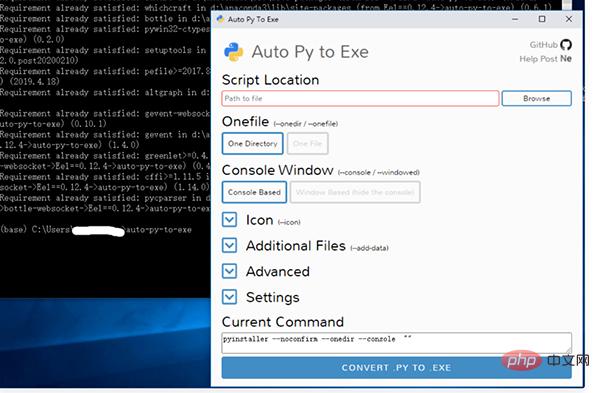
When the above picture appears, auto-py-to-exe is successfully installed.
3. Introduction to some options of auto-py-to-exe
When using auto-py-to-exe to package python programs, there are many configuration options that we need to specify. How to correctly It's important to know what these options do. Below I'll cover some of the important options.
(1) Script Location
Script Location mainly specifies the python file we want to package

(2) Onefile
There are two options under Onefile, namely: One Directory and One File
- If you select One Directory, the program will be displayed in the form of a folder after packaging is completed
- If you select One File, then after the program packaging is completed, there will be an .exe file
(3) Console Window
Console Window mainly sets whether the console appears when the packaging program is running
- Console Based: When the packaged program is run, a console interface will be displayed
- Window Based (hide the console): The console interface will be hidden, mainly used for programs with GUI python program packaging
(4) Icon
Icon used to specify the packaged program
4. auto-py-to-exe actual combat
This section mainly uses a calculator program to introduce how to use auto-py-to-exe to package the program.
auto-py-to-exe packaging program is mainly divided into 3 parts, namely:
- Open auto-py-to-exe
- Configure packaging options
- Check the packaging effect
1. Open auto-py-to-exe
Open cmd, enter: auto-py-to-exe Open auto-py- to-exe, we have to make configuration selections.
2. Configure packaging options
Calculator program, you can download it from GitHub, the address is: https://github.com/pythonprogrammingbook/simple_calculator
In packaging At this time, the configuration we need to perform mainly includes:
- Script Location
- Onefile
- Console Window
Script Location Select the program For the main program, in the calculator project, we choose main.py
Onefile Select One File because one file looks simpler
Since the calculator project has a GUI, Console Window Select Window Based (hide the console),
Icon Select an ico file, this operation is not required, you don’t need to set it
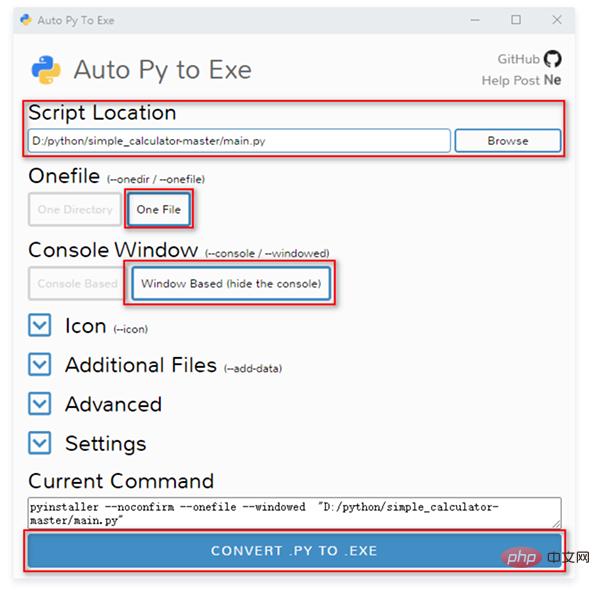
If there is one in the program For our own module, we must add the module's directory to Additional Files. Otherwise, the Failed to execute script XXX error will appear

#In the calculator program, all our modules are in the calculation directory, so we need to add the calculation path to Additional Files.
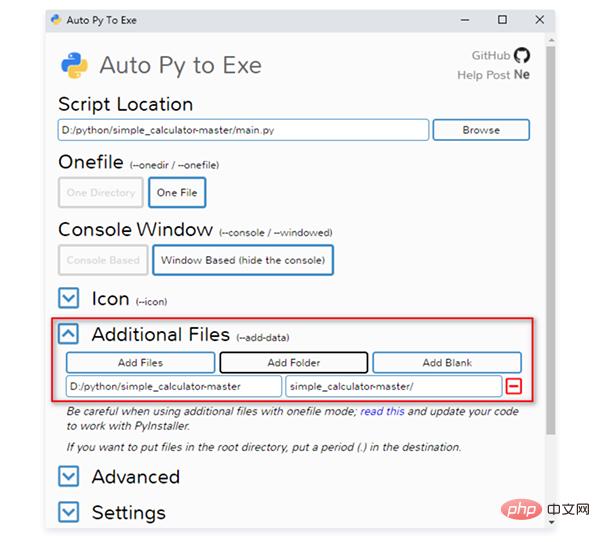
After the configuration is completed, click the CONVERT .PY TO .EXE button
In this way, we have completed the packaging of a calculator project.
3. View the packaging effect
After the program completes packaging, we can click the OPEN OUTPUT FOLDER button, and then the path to the packaged file will be opened.
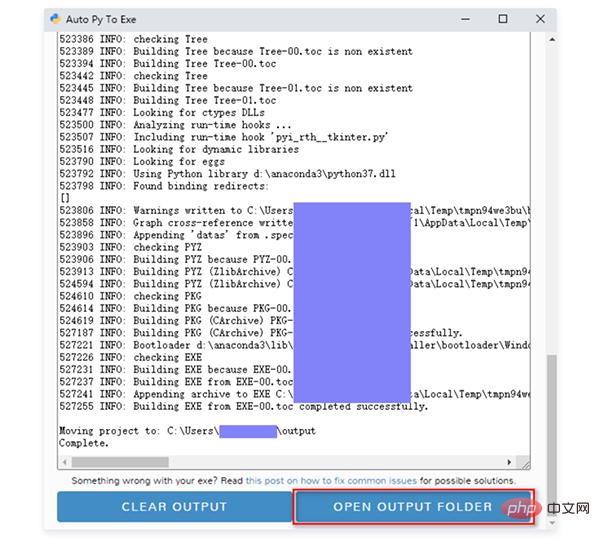
In the packaging file directory, we can see a main.exe file, which is our packaging file.
Click main.exe and you will see a calculator program.
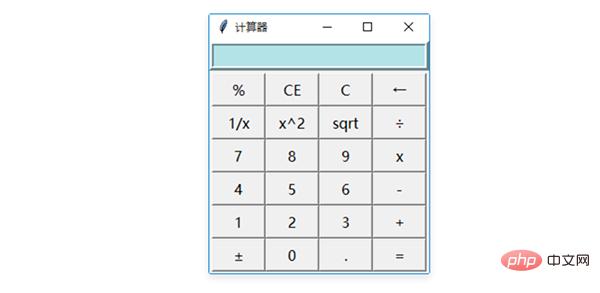
At this point, the packaging work has been successfully completed.
5. Summary
This article mainly introduces how to use auto-py-to-exe to package python programs. But this only introduces the simplest Python program packaging. If you want to package complex programs, the above configuration will definitely not work.
If you want to know more about auto-py-to-exe, I suggest you study pyinstaller. auto-py-to-exe is based on pyinstaller. Studying pyinstaller will have a very obvious effect on our in-depth use of auto-py-to-exe.
If you want to know more about pyinstaller, you can read the official documentation.
The above is the detailed content of Python script packaging exe, auto-py-to-exe will help you!. For more information, please follow other related articles on the PHP Chinese website!

Hot AI Tools

Undress AI Tool
Undress images for free

Undresser.AI Undress
AI-powered app for creating realistic nude photos

AI Clothes Remover
Online AI tool for removing clothes from photos.

Clothoff.io
AI clothes remover

Video Face Swap
Swap faces in any video effortlessly with our completely free AI face swap tool!

Hot Article

Hot Tools

Notepad++7.3.1
Easy-to-use and free code editor

SublimeText3 Chinese version
Chinese version, very easy to use

Zend Studio 13.0.1
Powerful PHP integrated development environment

Dreamweaver CS6
Visual web development tools

SublimeText3 Mac version
God-level code editing software (SublimeText3)

Hot Topics
 How to handle API authentication in Python
Jul 13, 2025 am 02:22 AM
How to handle API authentication in Python
Jul 13, 2025 am 02:22 AM
The key to dealing with API authentication is to understand and use the authentication method correctly. 1. APIKey is the simplest authentication method, usually placed in the request header or URL parameters; 2. BasicAuth uses username and password for Base64 encoding transmission, which is suitable for internal systems; 3. OAuth2 needs to obtain the token first through client_id and client_secret, and then bring the BearerToken in the request header; 4. In order to deal with the token expiration, the token management class can be encapsulated and automatically refreshed the token; in short, selecting the appropriate method according to the document and safely storing the key information is the key.
 How to test an API with Python
Jul 12, 2025 am 02:47 AM
How to test an API with Python
Jul 12, 2025 am 02:47 AM
To test the API, you need to use Python's Requests library. The steps are to install the library, send requests, verify responses, set timeouts and retry. First, install the library through pipinstallrequests; then use requests.get() or requests.post() and other methods to send GET or POST requests; then check response.status_code and response.json() to ensure that the return result is in compliance with expectations; finally, add timeout parameters to set the timeout time, and combine the retrying library to achieve automatic retry to enhance stability.
 Python variable scope in functions
Jul 12, 2025 am 02:49 AM
Python variable scope in functions
Jul 12, 2025 am 02:49 AM
In Python, variables defined inside a function are local variables and are only valid within the function; externally defined are global variables that can be read anywhere. 1. Local variables are destroyed as the function is executed; 2. The function can access global variables but cannot be modified directly, so the global keyword is required; 3. If you want to modify outer function variables in nested functions, you need to use the nonlocal keyword; 4. Variables with the same name do not affect each other in different scopes; 5. Global must be declared when modifying global variables, otherwise UnboundLocalError error will be raised. Understanding these rules helps avoid bugs and write more reliable functions.
 Python FastAPI tutorial
Jul 12, 2025 am 02:42 AM
Python FastAPI tutorial
Jul 12, 2025 am 02:42 AM
To create modern and efficient APIs using Python, FastAPI is recommended; it is based on standard Python type prompts and can automatically generate documents, with excellent performance. After installing FastAPI and ASGI server uvicorn, you can write interface code. By defining routes, writing processing functions, and returning data, APIs can be quickly built. FastAPI supports a variety of HTTP methods and provides automatically generated SwaggerUI and ReDoc documentation systems. URL parameters can be captured through path definition, while query parameters can be implemented by setting default values ??for function parameters. The rational use of Pydantic models can help improve development efficiency and accuracy.
 Python for loop with timeout
Jul 12, 2025 am 02:17 AM
Python for loop with timeout
Jul 12, 2025 am 02:17 AM
Add timeout control to Python's for loop. 1. You can record the start time with the time module, and judge whether it is timed out in each iteration and use break to jump out of the loop; 2. For polling class tasks, you can use the while loop to match time judgment, and add sleep to avoid CPU fullness; 3. Advanced methods can consider threading or signal to achieve more precise control, but the complexity is high, and it is not recommended for beginners to choose; summary key points: manual time judgment is the basic solution, while is more suitable for time-limited waiting class tasks, sleep is indispensable, and advanced methods are suitable for specific scenarios.
 How to parse large JSON files in Python?
Jul 13, 2025 am 01:46 AM
How to parse large JSON files in Python?
Jul 13, 2025 am 01:46 AM
How to efficiently handle large JSON files in Python? 1. Use the ijson library to stream and avoid memory overflow through item-by-item parsing; 2. If it is in JSONLines format, you can read it line by line and process it with json.loads(); 3. Or split the large file into small pieces and then process it separately. These methods effectively solve the memory limitation problem and are suitable for different scenarios.
 Python for loop over a tuple
Jul 13, 2025 am 02:55 AM
Python for loop over a tuple
Jul 13, 2025 am 02:55 AM
In Python, the method of traversing tuples with for loops includes directly iterating over elements, getting indexes and elements at the same time, and processing nested tuples. 1. Use the for loop directly to access each element in sequence without managing the index; 2. Use enumerate() to get the index and value at the same time. The default index is 0, and the start parameter can also be specified; 3. Nested tuples can be unpacked in the loop, but it is necessary to ensure that the subtuple structure is consistent, otherwise an unpacking error will be raised; in addition, the tuple is immutable and the content cannot be modified in the loop. Unwanted values can be ignored by \_. It is recommended to check whether the tuple is empty before traversing to avoid errors.
 What are python default arguments and their potential issues?
Jul 12, 2025 am 02:39 AM
What are python default arguments and their potential issues?
Jul 12, 2025 am 02:39 AM
Python default parameters are evaluated and fixed values ??when the function is defined, which can cause unexpected problems. Using variable objects such as lists as default parameters will retain modifications, and it is recommended to use None instead; the default parameter scope is the environment variable when defined, and subsequent variable changes will not affect their value; avoid relying on default parameters to save state, and class encapsulation state should be used to ensure function consistency.







